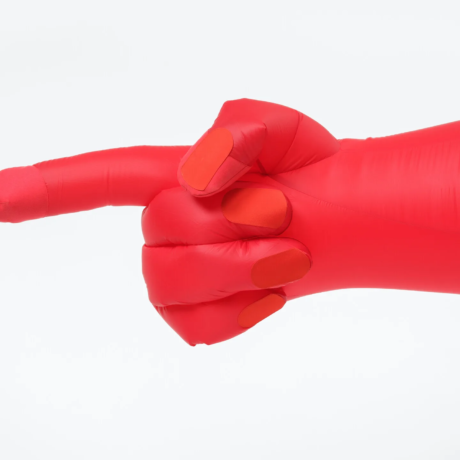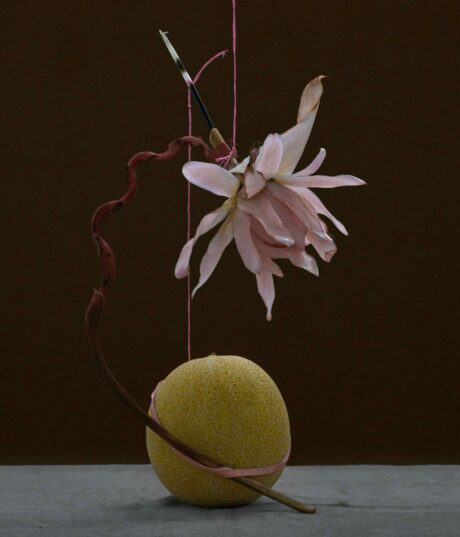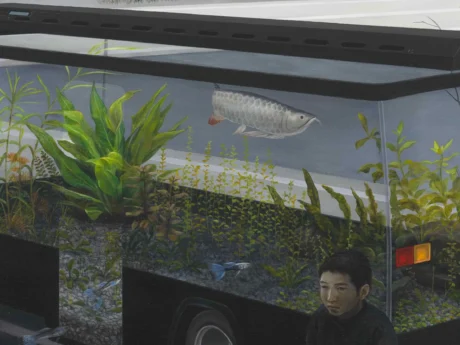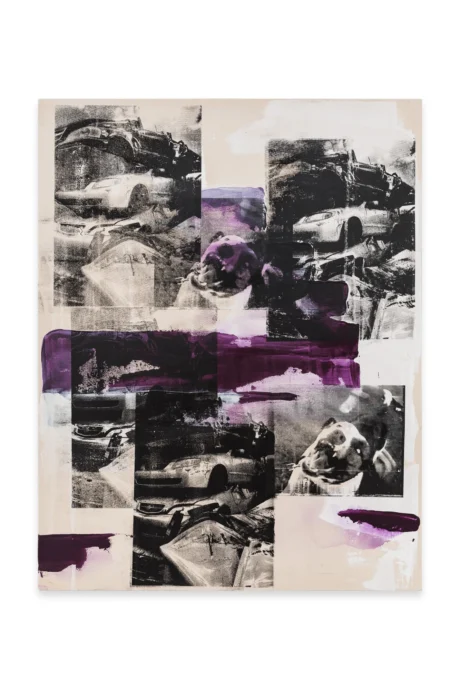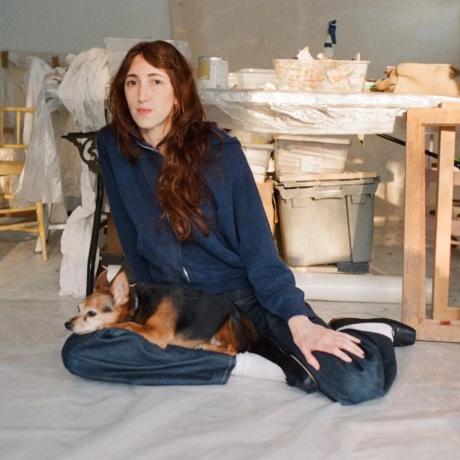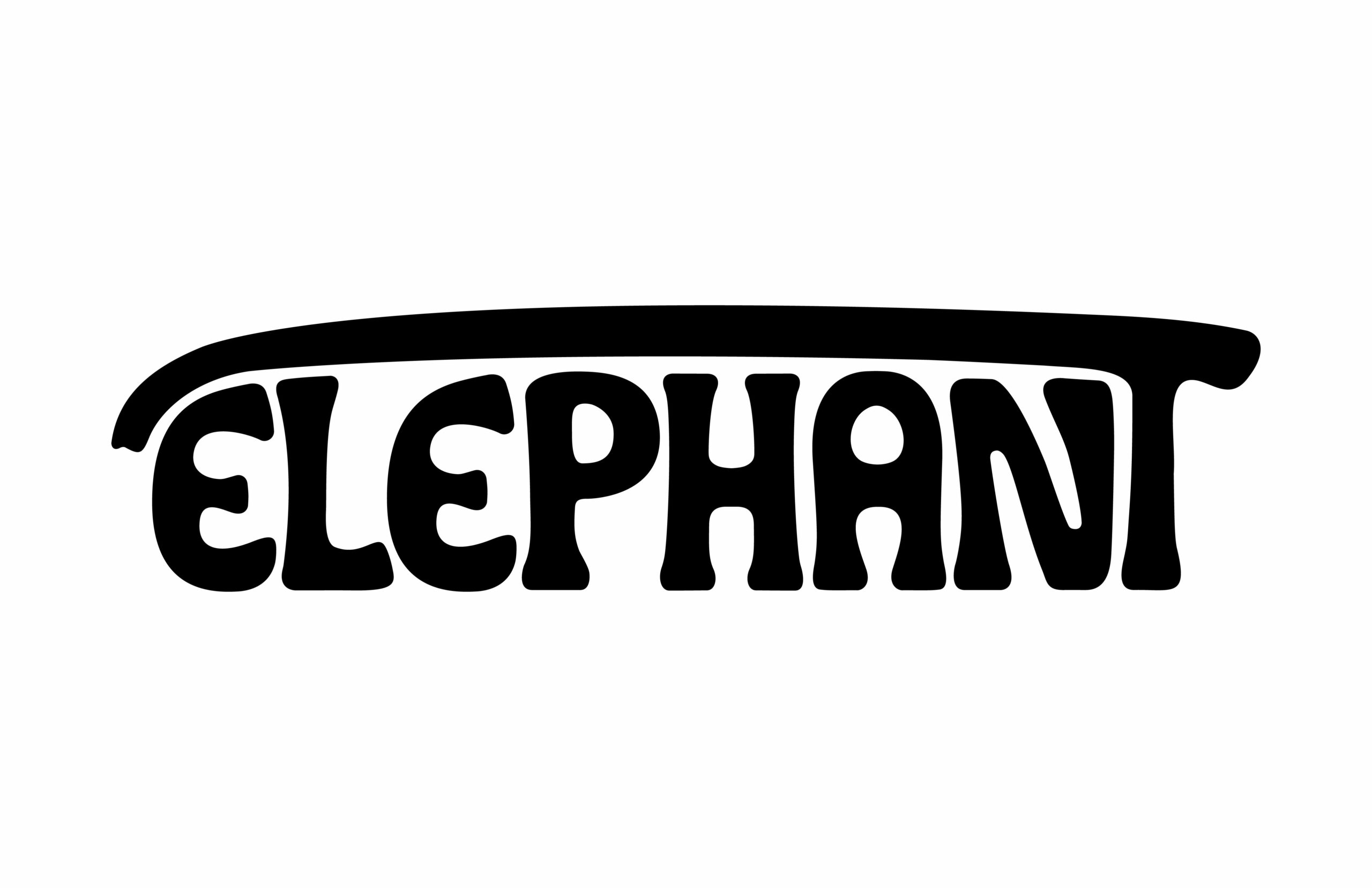Reframe is a monthly column in which contributor Sam Falb discusses timely openings to view in New York. Each edition offers commentary on the latest exhibitions, performances, and installations. Dynamic and ever-evolving, the content reflects the fluidity of the market it travels through.
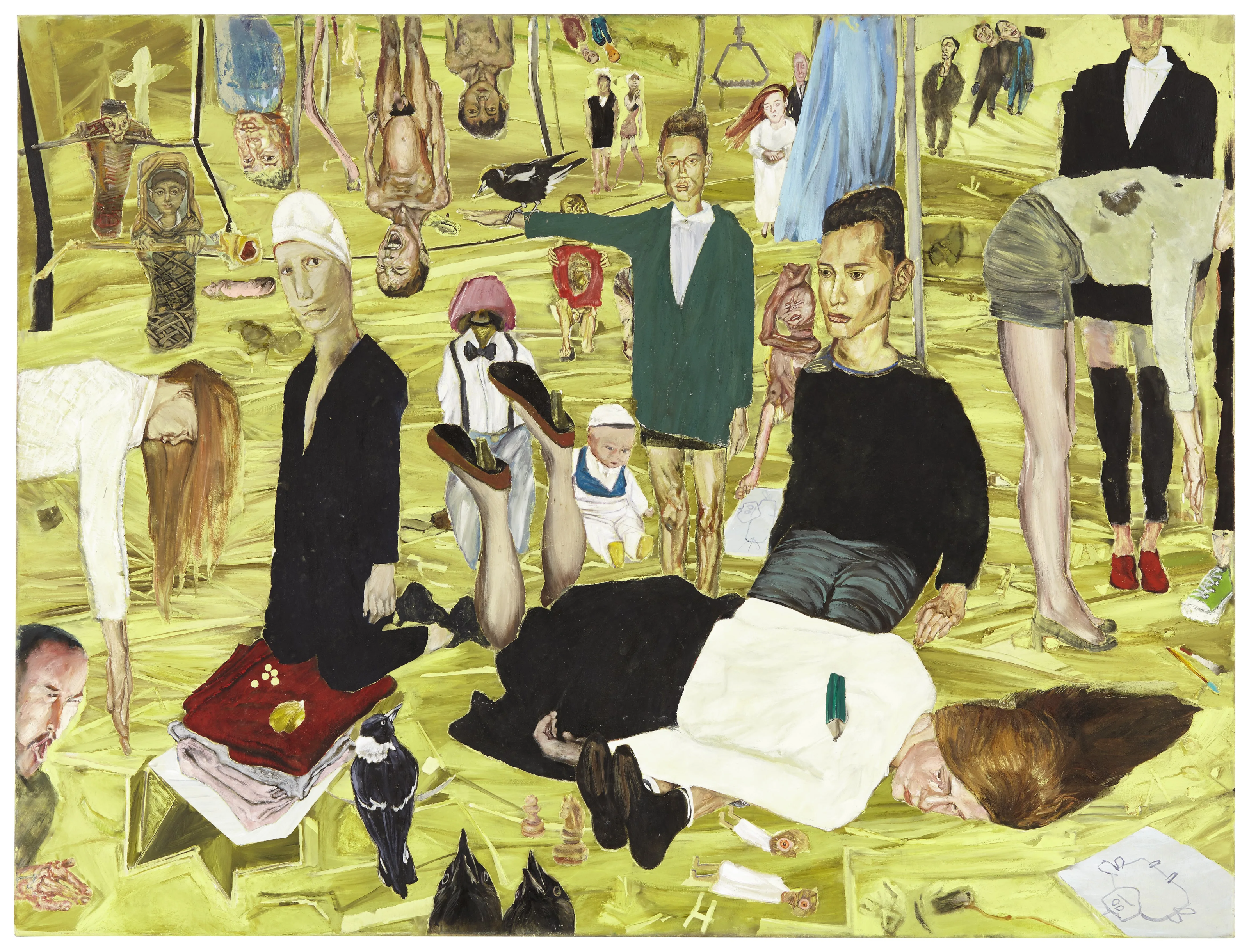
Firsts are the rule for this issue. This marks the first column of the year, the first U.S. showings for a variety of the included artists, the first commercial gallery experience for one decidedly brave collective, and the first physical manifestation of one notable artist’s practice (alongside Rick Owens, no less). It also marks the last of the column’s release at this date. Expect future issues to launch on the third of each month, and with assorted guest inclusions across the worlds of art and culture! By bringing the community further into Reframe, the content opportunity grows and expands along with it in exciting ways.
We encourage readers to consider spending time learning more about the Los Angeles art community and the LA Arts Community Fire Relief Fund, which will provide emergency relief to artists and arts workers in the wake of the horrific slew of fires that have hit the region. The fund is administered by LA’s Center for Cultural Innovation here (donation link to open on January 20 here) as well as the Getty Center (with donations open here).
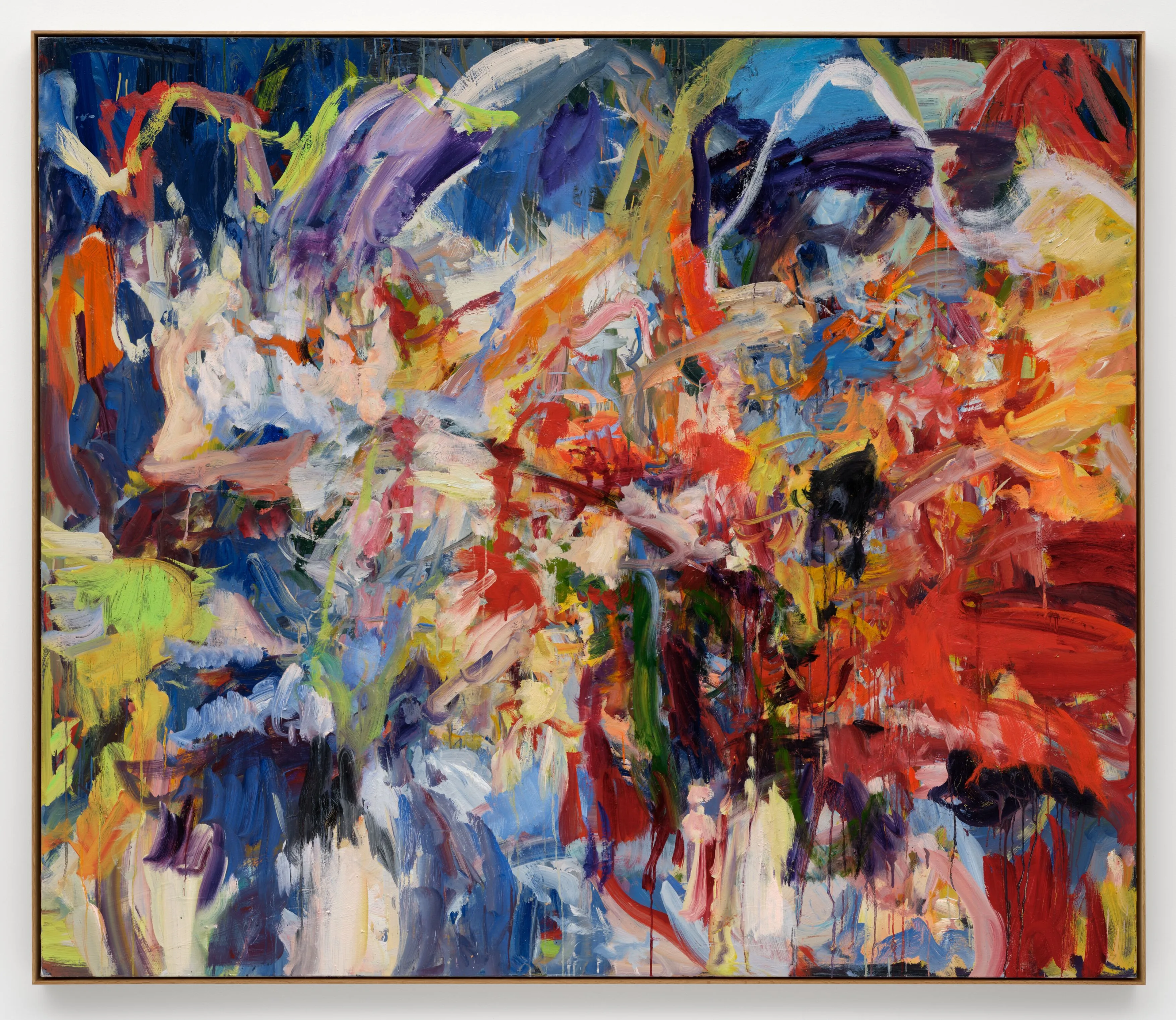
Hauser & Wirth: Silent Music (January 30 – April 12)
Find the energizing thrill of Catherine Goodman’s work in a presentation of new, large-scale paintings at Hauser & Wirth. Fields of orchestrated color in strokes of fiery orange, deep-sea blue, and grassy greens greet viewers in storms of brushstrokes – showcasing the artist’s practice grounded in observation, as well as inspirations à la Titian, Veronese, and the London School’s psychological work. She works in the medium of providing commentary on collective experience, which feels highly available in works open to interpretation as mountainous scenes, rushing waves, or however one’s mind might make sense of the bounteous canvas in front of them. As a hint, the artist drew on landscapes and portraits that held special meaning for her in the production of these works. They’re an exercise in processing energy, she tells writer Jennifer Higgie who wrote an essay on the exhibition: Her artmaking “was never about problem solving. It’s about releasing something.” Step off the blustery streets of a Chelsea in the full-throes of riverside winter chill, into the bloom of Goodman’s collection – rosy auras and the radiant warmth of creative catharsis await.
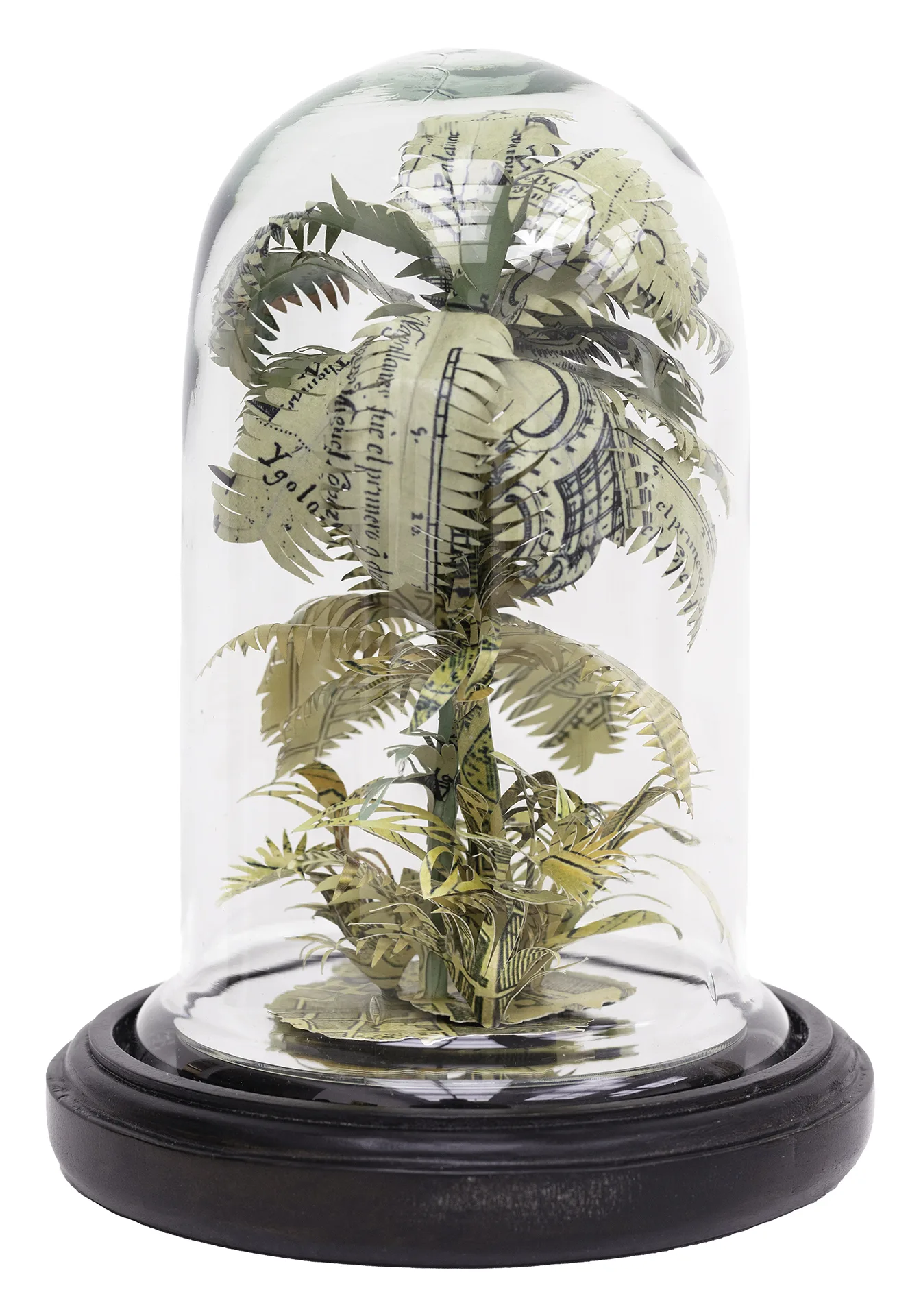
Silverlens: Entangled Pairs, ISLES (January 16 – March 1)
At Silverlens’ New York and Manila locations, find two shows of particular note. The first manifests as Renato Orara’s transcontinental show of works on paper, rendered in a uniquely hypnotic style. The 100 ballpoint pen drawings buzz with the animated grace of Orara’s practice, coaxing a closer, critical look at the delicate shading before one’s eyes. Everyday items enjoy a renewed sense of “quantum entanglement” as described in show notes, coming alive in an almost supernatural rendition of items that feel radically present with viewers, even as they live within the confines of their white-planed homes. Alongside Orara’s work, an artist with previous exhibiting opportunities at the Palais de Tokyo, the Singapore Art Museum, and Chiang Mai’s MAIIAM Contemporary Art Museum, has touched down in the US. Ryan Villamael’s paper-cut map sculptures are encased in glass bell jars, modest in stature but profound in storytelling, furthering the Filipino artist’s Pulô series (that’s “island” in Tagalog). The group of jars explore themes of landscape, memory, and natural preservation. Reading between the lines (or branches of the spindly, sinewy structures that Villamael has produced) reveals his usage of maps as an exploratory tool for his family’s migration, as well as the long, storied, and often turbulent history of migration in his home country – caught in the crossfires of geopolitical dramatics. “This is a very personal journey for me, but very political in many ways,” Villamael shared the morning before the opening. Listen closely for a touching audio component as well. This includes the artist wishing his father a happy birthday alongside his mother, as well as singing the song “Always” by the British pop band Erasure to his father, including the lyrics “always, I wanna be with you and make believe with you.” Between each show, expect a powerful sense of distance and what occurs when rationalizing feelings, transcontinental connections, and the yearning to understand our relationships with place, identity, and belonging.
Swiss Institute: Close-Up (January 22 – April 23)
The work of artist Deborah-Joyce Holman has landed in New York for their first institutional exhibition in the States with Close-Up. Holman engages with the medium of video (masterfully, with a narrative poise that’s equal-parts arresting and visually hypnotic) to explore strains of political representation and the ongoing wrestle surrounding racial profiling, gender inequity, and capitalism. It’s intimate, with a lens trained on the actress’s face and form as she completes humdrum tasks – drinking tea, lying on a couch – in a framing featuring a pan of a home’s interior space and architectural details. The work is a restaging of 2023’s Close-up/Quiet as it’s kept, a previous video work featured at TANK Shanghai over the summer as the artist’s first Asian showing. The everyday commentary on social discourse and economics crosses between the two video pieces, and provides viewers with an unguarded intimacy alongside the subject of the film. The work asks viewers to interrogate the narrative: What is the nature of this character? What struggles does she face? Holman creates a dialogue that oscillates between the personal and the systemic, urging viewers to confront the subtle yet pervasive forces shaping identity and representation. Perhaps show notes share it best: “Close-Up looks beyond political grammars of repair to consider the quiet, disruptive frequencies of Black feminine agency within the filmic field of representation.”
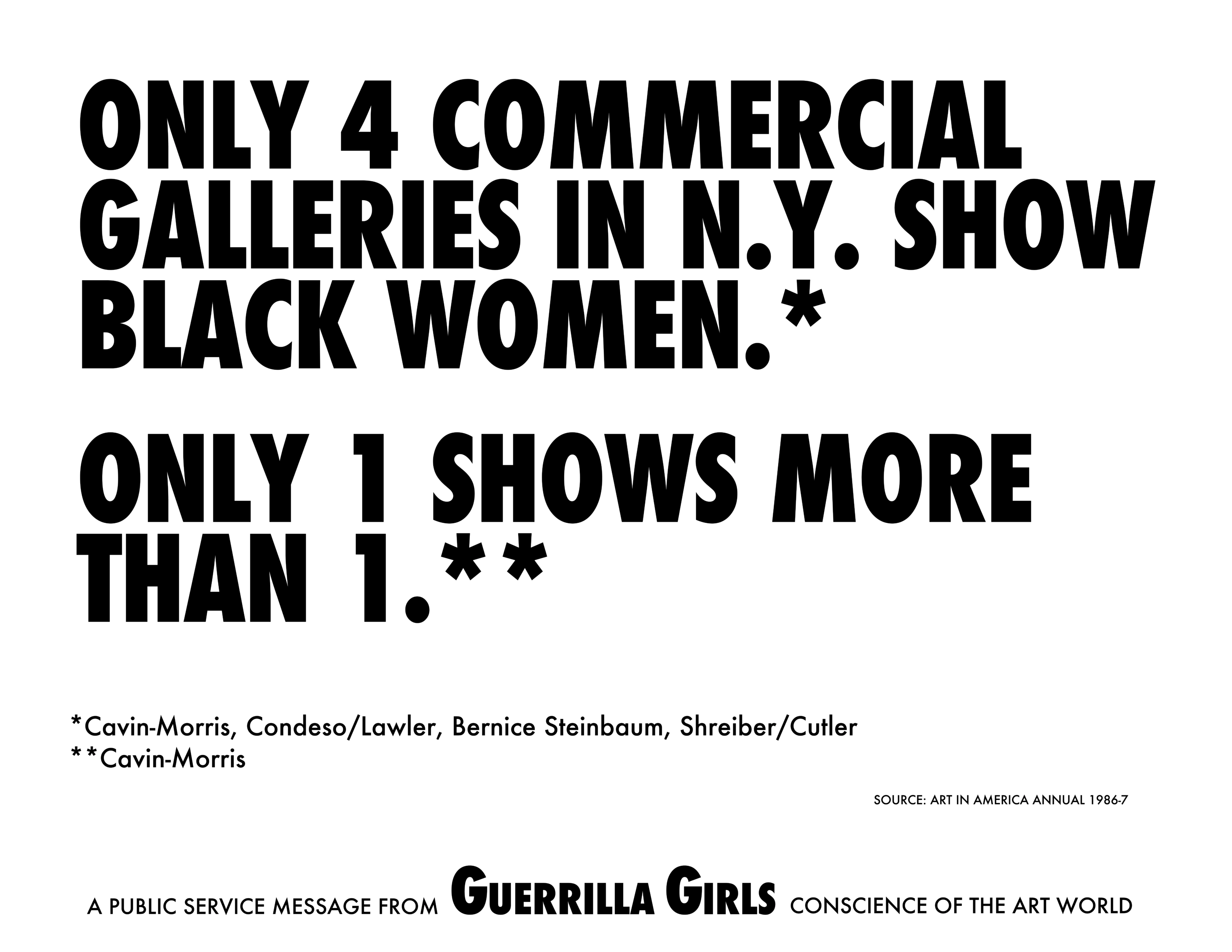
Hannah Traore: Guerrilla Girls: Discrimi-NATION (January 16 – March 29)
When the Guerilla Girls speak, it’s certainly time to listen. Known for messaging that’s biting and urgently aware, four decades worth of content from the feminist collective are now available to view. Take in a slew of highly informative infographics about the state of the art world as it relates to the struggles of women and BIPOC artists. With bold textual flavor and a creative manipulation of written content, the visuals play with communicative language in highly thoughtful ways. Factoids like the definition of hypocrite—”an art collector who buys white male art at benefits for liberal causes but never buys art by women or artists of color”—are brought to life through strong shading and bold typography, furthering the message’s snarling tone and forceful truth that demands to be heard. Pivoting onward – the collective’s code of ethics for art museums? A ten commandments-esque display of industry-specific, targeted observational critiques of a system that is colloquially, and quite publicly, known for taking advantage of familial connection, financial hardship or overabundance, and an aversion to corporate social responsibility. In the tradition of Hannah Traore Gallery, which advocates for a wide array of artists and creative advancement in a gallery setting, this show makes an apt home at their Orchard Street space. In advance of the show, a member of the Guerilla Girls even brought to light that they were “the first commercial gallery to approach us, and to have the courage to produce this exhibition.” Embrace the fortieth anniversary of this collective as they continue to showcase unflinching honesty and a commitment to truth in the arts. Judicious, stoic, and an enduring reminder of the work to be done.
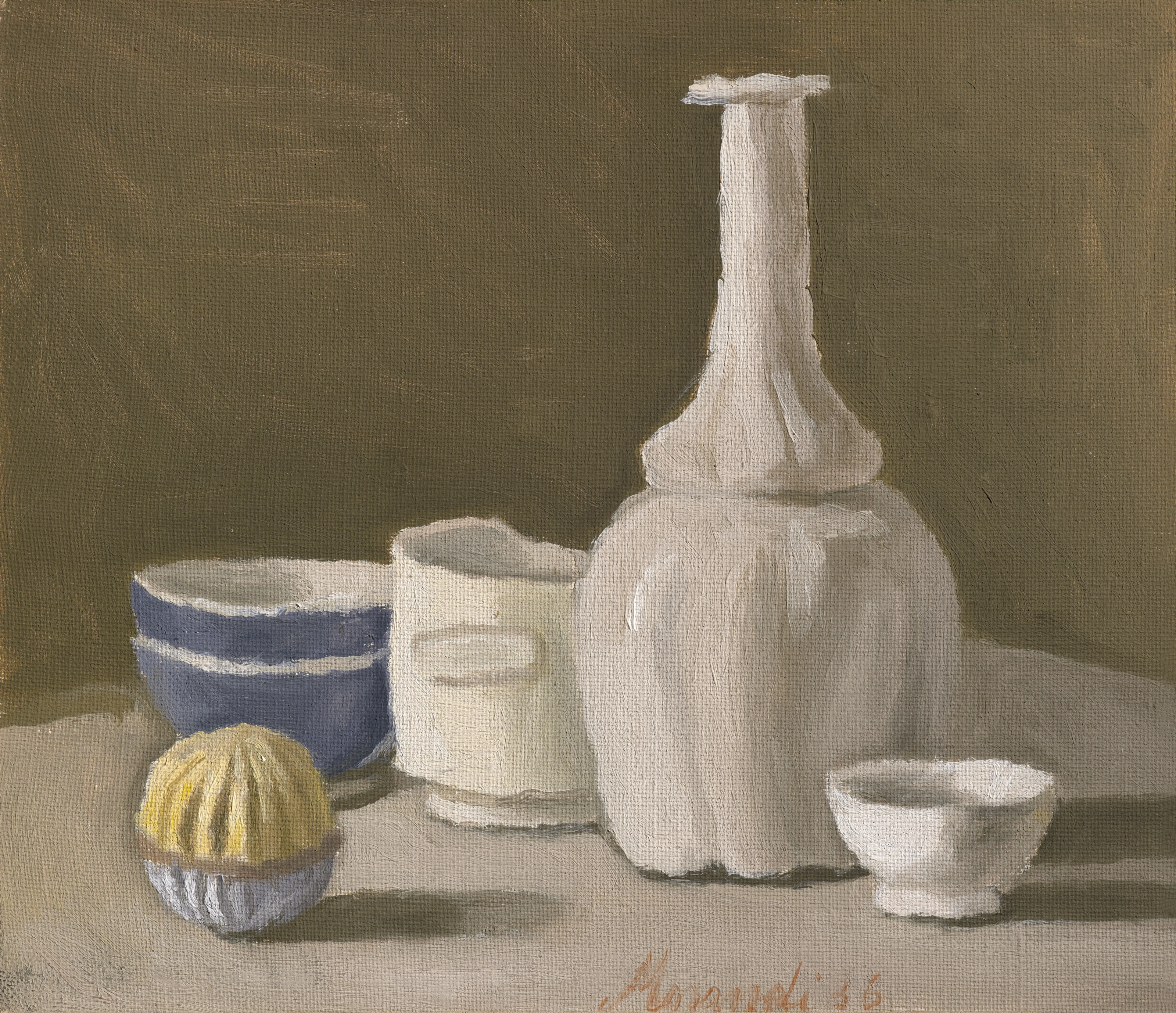
David Zwirner: Masterpieces from the Magnani-Rocca Foundation (January 16 – February 22)
While Giorgio Morandi spent nearly his entire life in Bologna and rarely traveled, he built a world of beautifully rendered, everyday object still-lifes in a particularly earthy, edge-obscured style. Consider Natura morta (Still Life), a city of kitchen jars, vases, and a semi-covered eggshell blue vase. The piece invites viewers to linger on the subtleties of shape and shadow, transcending their functionality and becoming architectural forms in a world of their own. Morandi’s ability to balance austerity with a soft, almost atmospheric warmth suggests a contemplative reverence for the act of seeing. Commentary on a Morandi showcase of this size and breadth would be incomplete without acknowledging the artist’s important friendship with Luigi Magnani, whose collection, on loan from the Magnani-Rocca Foundation, forms the foundation of this exhibition. Curated by art historian and Morandi scholar Dr. Alice Ensabella, the 50+ works are representative of a deep trust between Magnani and Morandi, with the former frequently buying directly from Morandi or receiving works as gifts. Behind each canvas is the story of a long-lasting, creative friendship that has lived long past the lives of its two protagonists.
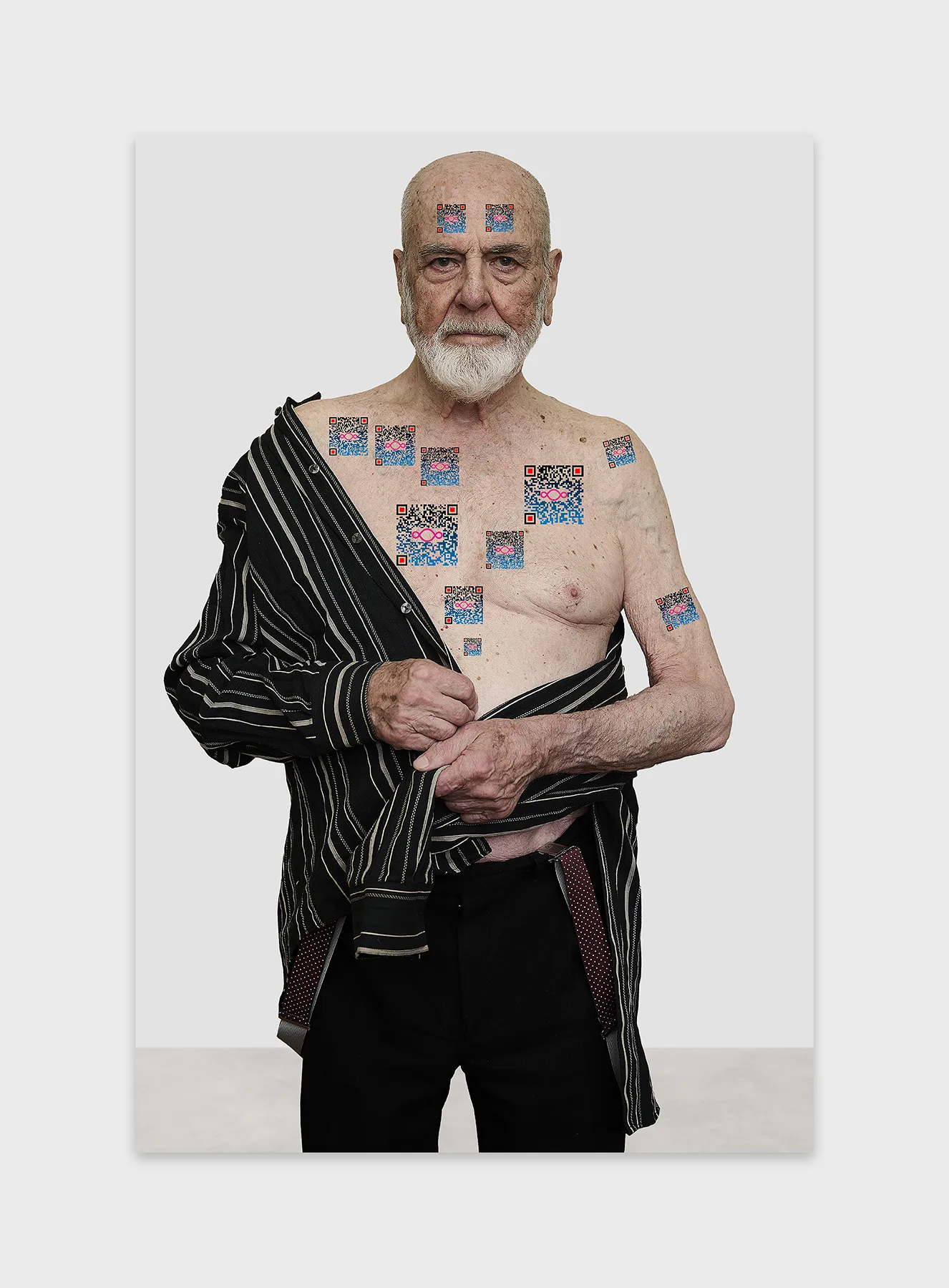
Lévy Gorvy Dayan: To Step Beyond (January 16 – March 29)
Nary a wider array of work can be felt than through the current slate of content on view at Lévy Gorvy Dayan, where canvases populated in shocks of neon green, orange, and beyond (Color and Light series), a step ladder standing tall (Scala), the artist himself covered in QR code imagery on his stoic form (QR code possession – Autoritratto), and twin mirrors – featuring a spray of shattered holes across their frames (Two Less One) are now staged at the gallery’s Upper East Side townhome. In notes on the show, readers will learn that “Pistoletto’s art creates the opportunity for confrontation, recognition, and interaction—to consider, in his words, ‘the state of things’ and to step beyond.” Take note of the mirrors in particular, which the show uses as a particular touchpoint for exploring the artist’s background. His QuadriSpecchianti (Mirror Paintings), first shown in 1962, inaugurated his design method, in which photographs are transferred directly onto layers of reflective steel. At the artist talk, Pistoletto furthered his discourse on mirrors in real-time: “The mirror, for me, is the way to make myself important, because I wanted to recognize myself, to understand who I was, why I exist. Art permits me to be free to research all possibilities for understanding.” Reflect closely on these words while weaving through the floors of the show – between 1973’s Attesa n1, a moody, somber back-facing view of silent pedestrians, or an updated take on the practice with Maria con smartphone, presenting the titular character (the artist’s wife) with a raised, searching cellular device.
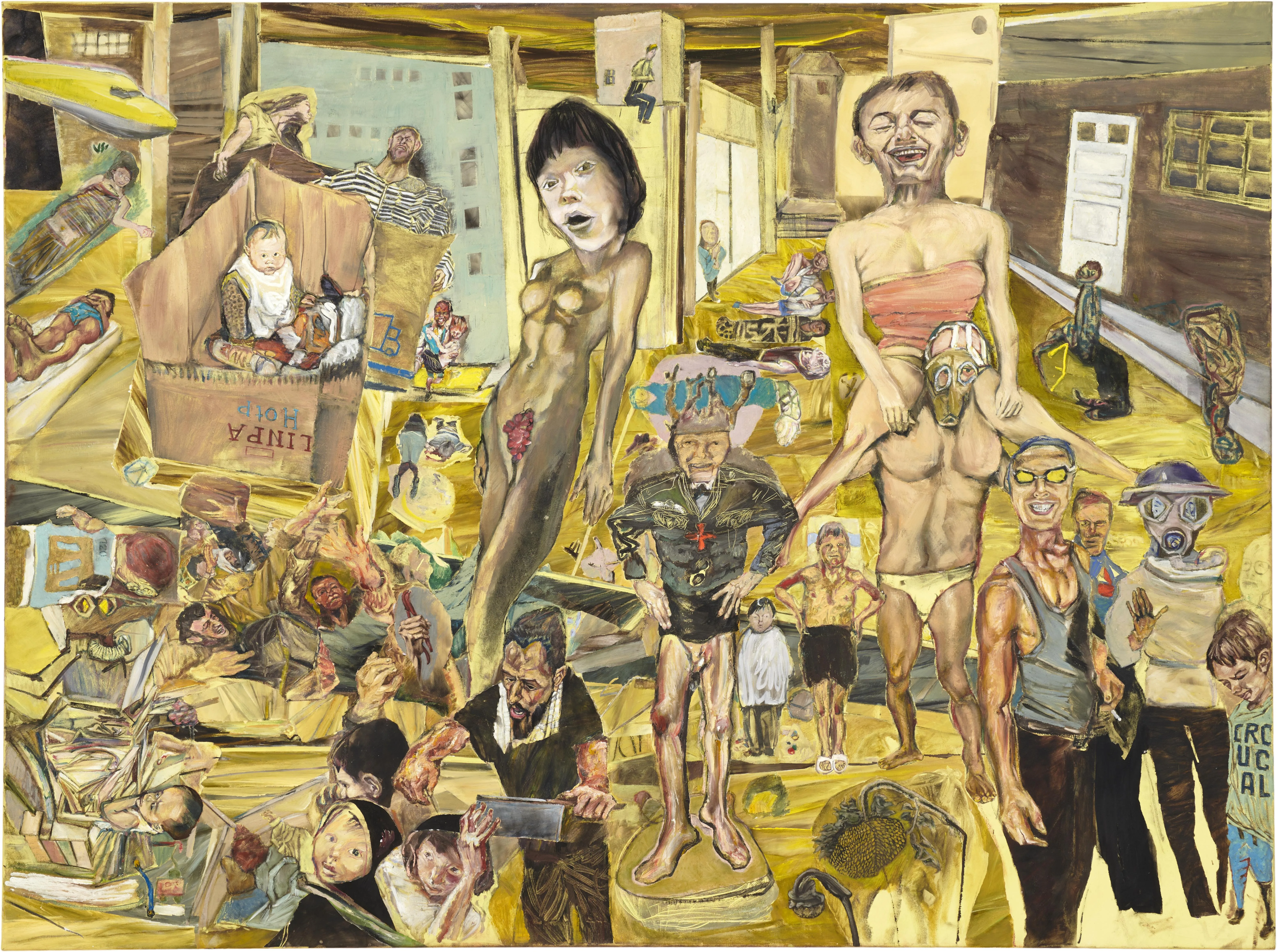
David Nolan: The Ghosts Ask (January 10 – February 22)
In a sixth solo exhibition of Erwin Pfrang’s work at the gallery, David Nolan presents recent paintings and works on paper rife with fervent emotion and razor-sharp undercurrents. Between gasping and screaming figures, the crucifixion of a male form, and an outstretched tongue latching onto a distant mouth (Angel Brings What Is Desired), this well of imagery is just the entrypoint to a story of “fragility, suffering and existential unease” as exhibition text describes. Why, you might ask, does this anthropological study take such a sinister bent? For Pfrang, the works reflect slices of his lived experience, as well his observations of society writ-large. Between contemporary current events doused in fire, global armed conflicts, and political turmoil, the show comes at a prescient time in which the personal and the political feel inextricably linked. Pfrang’s imagery, steeped in both vulnerability and violence, serves as a mirror to a world grappling with chaos and uncertainty. Through his critical, thoughtful gaze, Pfrang crafts a narrative that is both deeply intimate and broadly resonant.
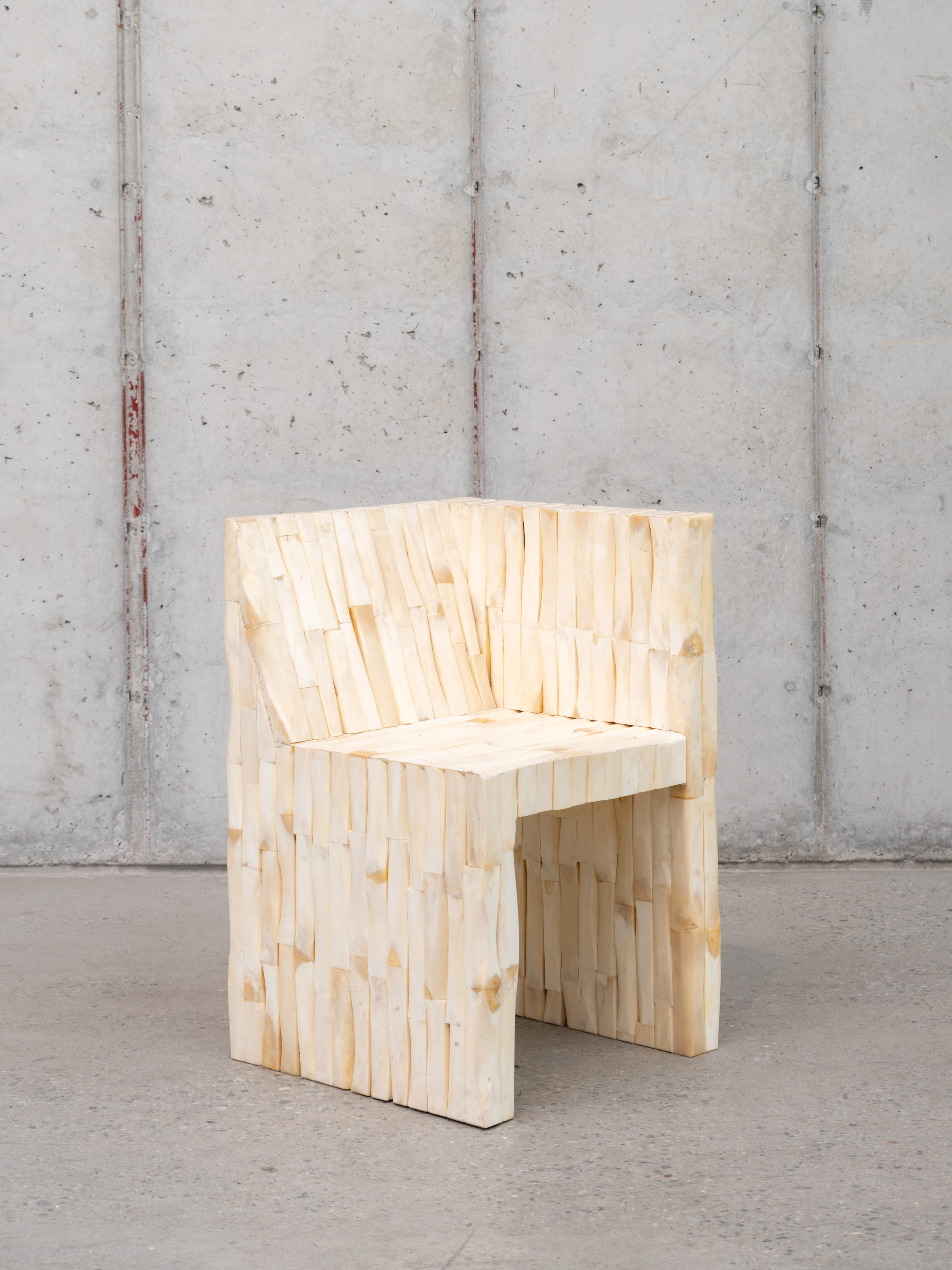
Salon 94: Desire Path, Backstage (January 9 – February 22)
The gallery marks the return to the exhibition calendar with a series of concurrent shows. Highlights include Miles Greenberg’s first foray into the tactile arts, working with the robotic stone carvers at Monumental Labs on a series of touching, pale pink, black, and grey sculptures featuring warm caresses, a softly-placed hand, and a movement-forward gravitas (perhaps referential to the artist’s founding creativity) that suggests a pouring liquid-esque texture down the side of the figures, while maintaining the structural integrity of clearly defined humanoid design. Guests in the space will also find a display of furniture packed with references across spheres of culture, scavenged rarities (bones from a butcher shop), and rare earth materials including porphyry and bois de marais (swamp wood). This is none other than a Rick Owens’ Furniture show, with creative collaboration by Owens and Michèle Lamy. The exhibition represents the continuation of a decades-long collaboration between the two entities, starting with Owens’ first furniture showing in 2010, “Pavane for a Dead Princess.” Opening night represented a coming-together of creative ambassadors across industries and disciplines for a night of celebration, editor Sahir Ahmed shared: “It was the fun kind of scene-y. How often are Michèle Lamy, Marina Abramovich, and Christeene in the same room? And the pieces spoke for themselves.”
Words by Sam Falb
